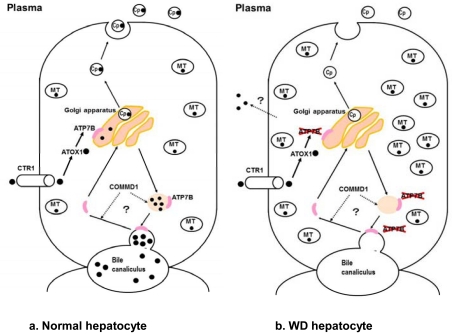Fig. (3).
Copper metabolism in normal and abnormal (affected by Wilson’s disease) hepatocytes. CTR1, copper transporter 1; ATP7B, copper-transporting Ptype ATPase ; Cp●, ceruloplasmin; ●: copper.
Left, copper metabolism in normal hepatocytes. Right, copper metabolism in hepatocyte of patient with Wilson’s disease. In hepatocytes affected by Wilson’s disease, copper cannot be transported from the cytosol to the Golgi apparatus due to a defect in ATP7B, so copper accumulates in the cytosol. Copper deficiency in the Golgi apparatus results in reduced secretion of copper into the blood as ceruloplasmin, during which biliary excretion of copper is disturbed. Accumulated copper in the hepatocyte is released into the blood as non-ceruloplasmin-bound copper, although the mechanism is unclear.

